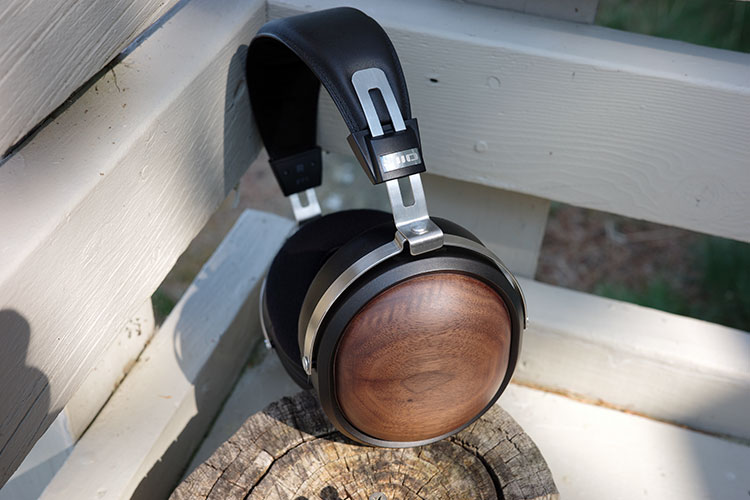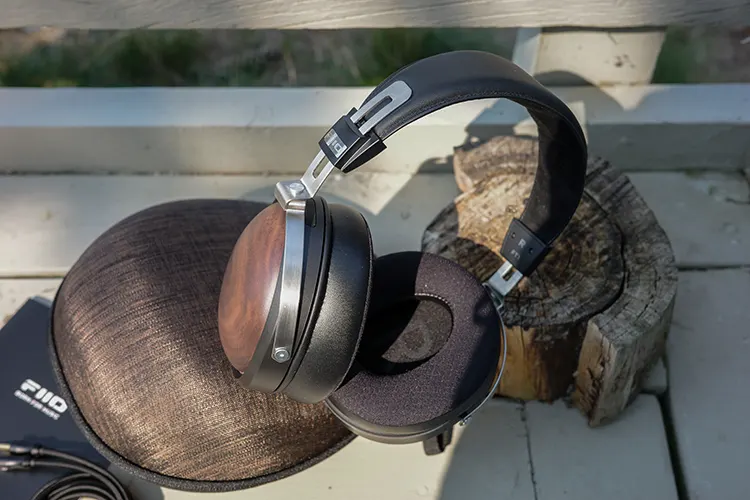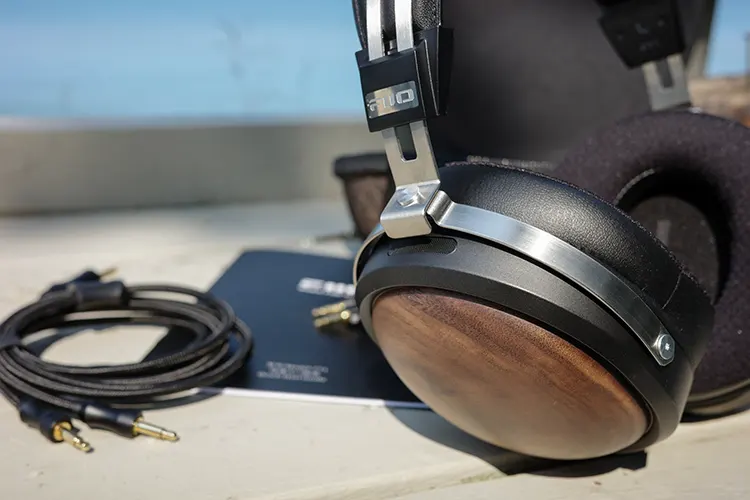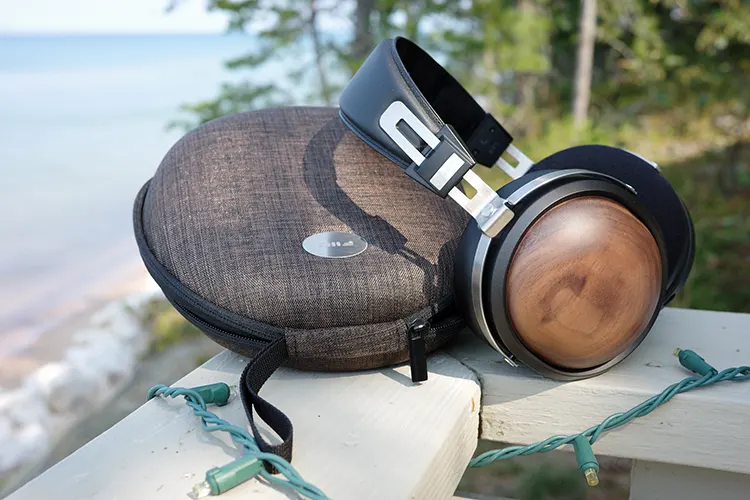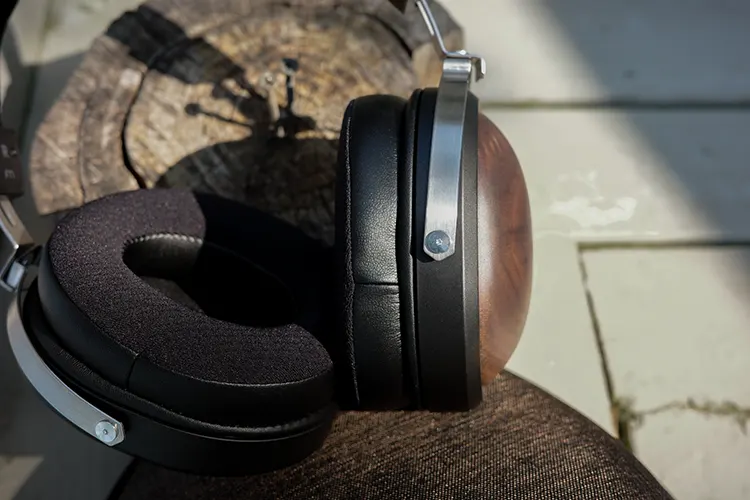In this feature, Lynn reviews the FiiO FT1, a new set of affordable closed-back 60mm dynamic driver headphones with black walnut solid wood cups. They are priced at $149.99.
Disclaimer: This sample was sent to me in exchange for my honest opinion. Headfonics is an independent website with no affiliate links or services. I thank FiiO for their support.
You can click here to learn more about the FiiO audio products we have previously reviewed on Headfonics.
Note that this post follows our current scoring guidelines which you can read in more detail here.
FiiO recently launched the FT1, a wooden cup closed-back full-sized headphone with a price point of $149.99 that falls into the same realm as the entry-level JT1 headphones released under their Jade Audio brand.
Meant to cater to those looking for a simple, straightforward closed-back headphone, the FT1 carries a larger 60mm dynamic driver tuned for flexibility across a wide range of recording genres.
With build quality on par with other FiiO products, including a beautiful wood cup finish we are off to a good start with these headphones.
To find out more about its performance and how it competes with the JT1, SIVGA’s Robin SV021, and the Meze Audio 99 Classics read my full review below.
Features
The FiiO FT1 uses a second-generation 60mm dynamic driver that carries a nanofiber composite diaphragm made from paper wood fibers in 90-year-old Spruce trees.
Soaking, cooking, beating, and pulping the material provides a consistency from which the diaphragm can be made with greater quality control.
This process also ensures a light, rapid-responding surface (0.14g weight) for the paper cone. Carbon fiber is also added for strength and a rigid, rapid response to the music.
The dense American Walnut cups reduce resonance while minimizing standing wave interference. Highly polished, the cups add a luxurious look to the overall character.
The 25mm voice coil is larger than many that use a dynamic driver of similar size. The W-shaped diaphragm provides a 25.8% increase in effective vibrating area, allowing for more energy storage.
This further minimizes vibrational loss in sound quality and distortion, which can come with less rigid material.
It comes with two 24AWG silver-plated oxygen-free copper cables finished with a stiff fabric wind covering. One is 3.5mm single-ended and the other is a 4.4mm balanced cable.
With a relatively sensitive rating of 113 dB/Vrms at 1kHz (98 dB at 1kHz) for SPL and an impedance of 32Ω, the FT1 is also easy to drive.
Design & Comfort
The FT1 is stylish, there is no denying that. The solid American Walnut cups give that upscale look, without becoming garish.
Those smooth cups may seem slippery, but the metal housing helps prevent slipping. The silver accented aluminum yoke looks svelte while providing support to the cups.
The silver continues into the stanchions, which have soft detents for adjusting each side. A small unmarked “scale” sits on the inside of each stanchion, allowing the user to make precise adjustments.
I wish there was a bit more click on the mechanism, but aligning each side can be done using that scale.
The headband carries a modicum of padding in separate “pillows,” that provide extra support and comfort. Based upon looks and feel alone, you would not expect the headband to provide the necessary comfort for long use, but it does. I was never left wanting for comfort with 5-6 hour listening sessions.
The soft, plush ear pads helped with the comfort as well. Leather sides give way to a synthetic suede-like material for breathability.
Mounted in the traditional stretch and slot lip, the cups can be changed easily to aftermarket branded pads. I recommend gathering many hours of use before thinking about a change. The existing pads are very good.
Other than the cables, which are too stiff for my liking, the FT1 has a premium look, feel, and fit.
Packaging & Accessories
The FT1 comes in a typical sleeved square box, with the case inside protected by a foam insert. Within the case, you will find the 3.5mm se and 4.4mm balanced cables along with a storage bag for the other cable and a 6.35mm se jack.
The look is premium, and the case reminds me of Focal’s iterations with the tweed-like pattern, but in brown patterns this time. A quick start guide rounds out the packaging.
The premium (there’s that word again) presentation belies what FiiO is trying to achieve with each successive model, whether it be headphones or an amplifier. Quality offerings exude a look, and the FiiO products have the goods to back that up.
Case
The brown tweed patterned case feels of quality as you grab it, but that case is not perfect. Where a case such as Focal has an indentation, which helps to act as a grip spot when picking it up, the FiiO case is smooth instead. This leads to losing grip on the case when you pick it up.
That brown patterned fabric also is too smooth and flat for my tastes with little tactility. A thicker, rougher fabric would alleviate both problems and hopefully, FiiO can change that.
Sound Impressions
The following impressions were made using the HiBy R4, Cayin N6ii, and Shanling M6 Pro. Comparisons were made to the FiiO JT1, SIVGA Robin (32Ω), and the Meze Audio 99 Classics.
Summary
I usually find dynamic driver closed-back headphones tend to have a warmer signature at these lower price points. Equally true is the opposite where manufacturers aim for an overly bright sound signature.
The FiiO FT1 balances both sides presenting a very melodic signature that neither comes across as too bright or too dark.
Yes, the FT1 comes across as more rich than bright, but it does not fully lose that technical ability to profess the highs such as accurate cymbal clashes and hits.
A rich textural response is heard in electric and bass guitar notes while percussive instruments promote an alacrity to them that while not overly bright, comes across as natural with an accuracy added.
The sub-bass is strong but not overbearing, with a little bleed into the mids, more so than the JT1. This melds together well though to present a holistic sound combination instead of a muddying effect.
The energy up top seems just right with adequate air to the notes countering the additional sub-bass below.
Timbre
The FT1 delivers a richer and darker sound signature, but not as much as vaunted headphones such as the Campfire Audio Cascade.
Where the deep rich signature of the Cascade draws you in, the FT1 presents the music more harmoniously, but with less dynamic effect. Not really a fair comparison, but I hope this gets the point across.
That richness in quality pairs with a fun overall signature that can counter any lack of detail by producing a euphonic signature that is a blast to drive toward higher volume levels. Not quite like the aforementioned Cascade, but on the same path.
Accurately presented, the timbre comes across individually in the pluck of guitar strings, with depth and a richer tonality than not. The dark whispers of brass instruments are heard distinctly, adding not only to the accuracy of notes but also to the quality.
Female vocals come across as rich and deep (when called upon) in presentation, with accurate details too. Breathiness can occur, but the representation is as it is meant to be by the artist.
Staying true to the music, the FT1 flows with an organic nature that neither lacks clarity nor has too much darkness. The balance of which I spoke ties the whole together.
Staging & Dynamics
Dynamic driver headphones, especially closed-back ones, are often associated with smaller dimensions to their stage, too.
The FT1 balances that potential shortcoming with thick but not drippy or molasses-like sound quality in depth and width. Height, while average is aided by that additional space from the other dimensions, portraying an almost false ceiling to it; which gives excellent layering to the music.
The dynamic driver effect does mean that there is much more activity toward the center of the stage than the periphery, and the only inaccuracy I can attest would be on those far-reaching edges.
Those edges tend to get lost a bit, especially in busy parts, but not in a completely bad way. The FT1 allows the weight of note to carry the stage, making up for shortcomings mentioned at the edges.
A strong bassline though, can overwhelm the signature, limiting the overall edge space making me reach for the volume wheel on the R4. This is not entirely bad, but the boominess (often intended in the music) can’t hide itself within the stage on the FT1.
The fun factor mentioned in the Cascade comes about here too, with the FT1 desiring more volume, even with those “shortcomings.”
Synergy
Efficiency
There was never a lack of power using the DAPs mentioned above, with all providing enough headroom to drive the FT1 to ear pain levels. The scaling across platforms and high levels of volume show that the FT1 carries a quality of note that transcends many options.
Pairings
Using both the Shanling M6 Pro and the HiBy R4, the FT1 functioned impressively on both. The Shanling presents an even darker signature than the R4, but the dual DAC usage makes for a very impressive pairing, and my favorite of the lot.
The HiBy R4 has become a regular in my rotation, and for good reason. It provides a quality to the sound, that is neither too bright nor too dark, and with sufficient levels of detail to satisfy the needs of most tested equipment.
This also shows that the level of enjoyment sought between the R4 and FT1 can satisfy many who seek affordable options. The levels of detail do fall behind both the Shanling and Cayin especially, but in addition to the fun factor of the FT1, the R4 is hard to beat.
The Cayin N6ii is an excellent DAP, providing excellent levels of clarity and detail retrieval that can benefit many headphones that lack thereof.
While the FT1 does not lack too much in that respect, the N6ii provides an additive effect, that presents another quality of the FT1; the ability to work and play well together with many options.

